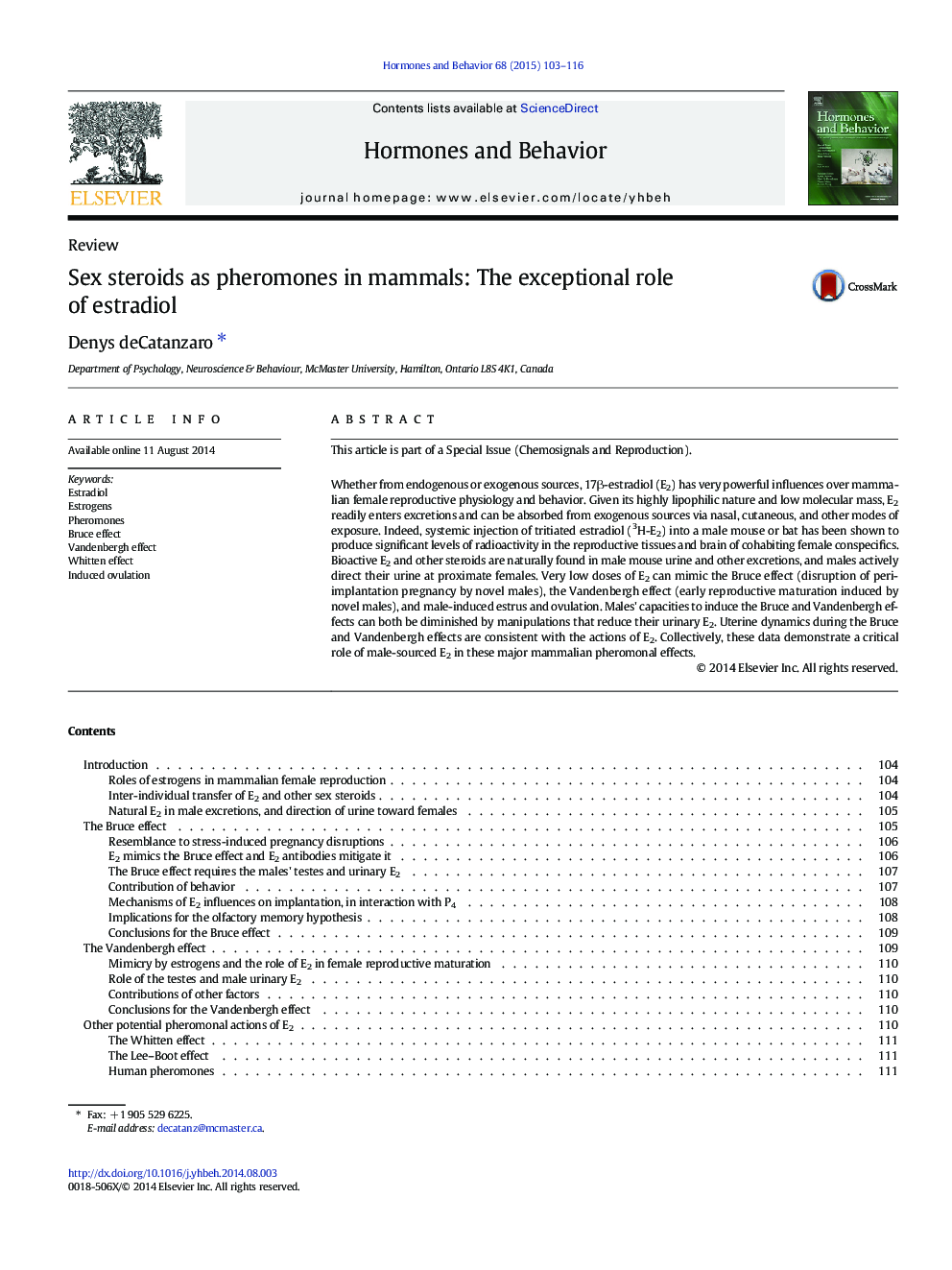| Article ID | Journal | Published Year | Pages | File Type |
|---|---|---|---|---|
| 323406 | Hormones and Behavior | 2015 | 14 Pages |
•Estradiol (E2) and other small steroids can transfer between cohabiting conspecifics.•E2 from males' excretions is measurable in the uterus and brain of nearby females.•Low doses of exogenous E2 mimic the Bruce and Vandenbergh effects.•Reduction in novel males' urinary E2 makes them unable to induce these effects.•Roles of males' E2 and females' olfactory memory in the Bruce effect are compatible.
This article is part of a Special Issue (Chemosignals and Reproduction).Whether from endogenous or exogenous sources, 17β-estradiol (E2) has very powerful influences over mammalian female reproductive physiology and behavior. Given its highly lipophilic nature and low molecular mass, E2 readily enters excretions and can be absorbed from exogenous sources via nasal, cutaneous, and other modes of exposure. Indeed, systemic injection of tritiated estradiol (3H-E2) into a male mouse or bat has been shown to produce significant levels of radioactivity in the reproductive tissues and brain of cohabiting female conspecifics. Bioactive E2 and other steroids are naturally found in male mouse urine and other excretions, and males actively direct their urine at proximate females. Very low doses of E2 can mimic the Bruce effect (disruption of peri-implantation pregnancy by novel males), the Vandenbergh effect (early reproductive maturation induced by novel males), and male-induced estrus and ovulation. Males' capacities to induce the Bruce and Vandenbergh effects can both be diminished by manipulations that reduce their urinary E2. Uterine dynamics during the Bruce and Vandenbergh effects are consistent with the actions of E2. Collectively, these data demonstrate a critical role of male-sourced E2 in these major mammalian pheromonal effects.
